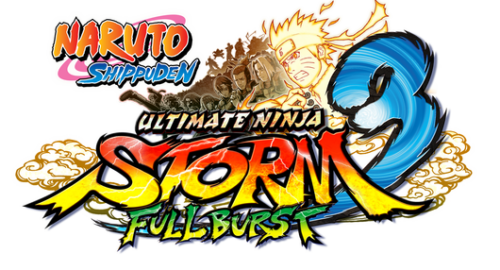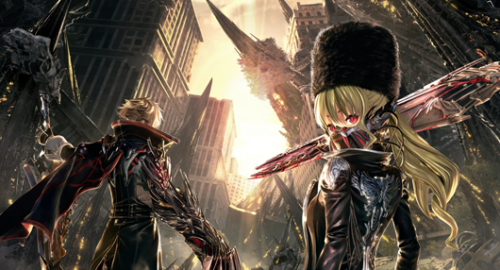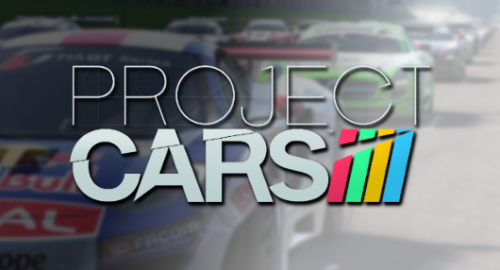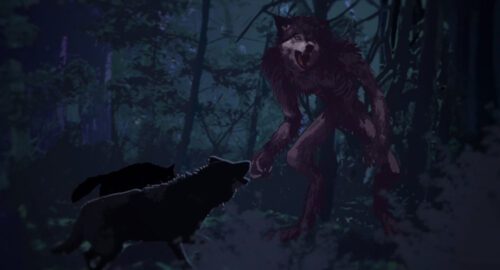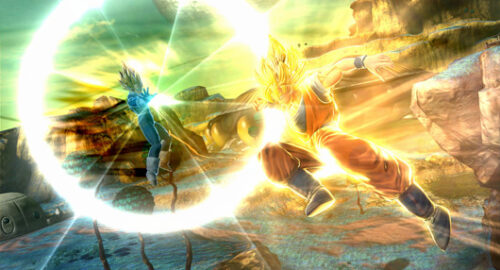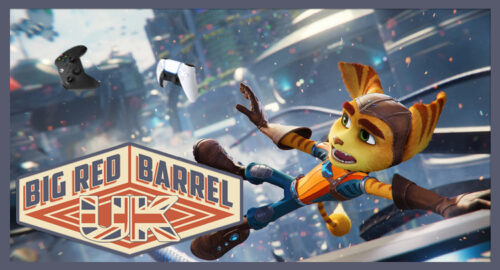Sword Art Online: Lost Song is the third in the Sword Art Online series of games, and like its predecessors, has nothing to do with the anime or manga, which confused me greatly when playing for the first time, and annoyed me a little bit as I’d spent the two weeks prior to receiving my review copy of Lost Song watching the anime to bring myself up to speed so I’d be in with a chance of following the story.
• Developer: Artdink
• Publisher: Bandai Namco
• Reviewed on: PlayStation Vita
• Also Available On: PlayStation 4
• Release Date: Available Now

Lost Song takes place in Svart Alfheim – an expansion for Alfheim Online, the second MMORPG featured in the anime and manga. Svart Alfheim is a series of islands, each slightly higher than the last. The island needs to be cleared in order to move the ‘plot’ forward and open the next island, which needs to be cleared and so on until all four islands are done.
I’ve been trying to figure out what the story is since I’ve been playing it, and when all is said and done I’m not entirely convinced there is one. Kirito and friends are playing the expansion to Svart Alfheim because they want to be the first to finish it. That’s it. There’s a story line in there somewhere about a world famous internet idol and child genius named Seven, who’s doing a secret experiment with VR and sings a lot, who changes her mind at the last minute because of plot devices.
Things take a turn for the strange and uncomfortable when you see avatars belonging to people it is safe to assume are adult males swooning over her. Maybe it’s a post-modern quip at online games being full of paedophiles, or maybe I’m giving it too much credit. Either way, the story feels like an afterthought. Something the writers threw together at the last minute to link together perverted fashion shows, blatant objectification, and suggested paedophilia into something that vaguely resembles narrative if you lower your standards and wish really, really hard.

The majority of the game is played out in a visual novel style, and the voice over is entirely Japanese, so if you do care about the tissue paper thin plot then prepare to do a lot of reading. Conversations play out with static character portraits and a text box and go on for far too long, the content of which varies between actual plot progression, awkward and perverse ‘comedy’, and blatant time wasting.
The dialogue consists mainly of hammy exposition, the majority of which is repeated several times in a fashion that would even make Hideo Kojima beg the writers to please just get to the point. The objectification of its female cast is distressing at best and troublesome at worst, seeing them reduced to a group similar to that found in the harem genre of manga, becoming awkward, flirtatious, and at times just inappropriate when talking to Kirito – even his own sister.
Scenes of the girls in hot springs (one such scene even involves tentacles), or being tricked into modelling their underwear are not a rarity, and feel completely shoe horned in to satiate the lust of one particular demographic that I am thankfully not a part of. I was playing Lost Song during my commute to and from my day job, and on more than one occasion I prayed to a higher power that no one else was looking at my Vita screen.

The other part of the Sword Art Online: Lost Song gameplay equation is that of a semi-competent action RPG. There are three areas to explore – town, field, and dungeon/cave, and the three have varying gameplay elements to attempt to break up tedium to minimal effect.
Dungeon exploration gets old fast. The interior of every dungeon looks the same as the last, and the same can be said about the caves. The same assets are used time and time again, from wall patterns to entire objects, sometimes within inches of each other, making it difficult to remember you’ve already been as there are no discernible landmarks. Absolutely nothing sticks out as unique.
The same holds true for the enemies. Be prepared to cut down wave after wave of identical looking monsters, who appear time and again on the four different islands with nothing more than a name change and a palette swap. Even several of the games bosses are just slightly tougher versions of ones that came before with a different paint job.
Special events can be triggered by talking to specific characters when prompted. These will activate one of the aforementioned conversations. These will sometimes lead to exploring one of the many identical dungeons and battle bosses, but most of the time it just involves a lot of reading and questionable images. These scenarios make up the bulk of the Sword Art Online: Lost Song and they’re extremely tedious.

Exploration is constantly being broken up by pointless conversations, ruining the pace of gameplay. At one point I was told to go back to town because I couldn’t access all of the dungeons on that island, to then be told to go back to the island and explore the dungeons I can access.
Terrain in traversed on foot or by air, the latter easily being Lost Songs most interesting element. Moving on foot is the same as it always is, with Kirito, or whoever of the 19 available characters you choose to play as, are controlled with the left analogue stick, jumping with X, and performing various contextual actions with circle. Holding R will activate Dash.
Aerial movement is split into two modes – Float and Flight. Float mode is activated by pressing left or right on the D-pad and allows your avatar to hover. Holding X will cause them to ascend, and double taping it will cause them to descend, although it’s quicker to just exit Float mode my pressing down on the D-pad and falling to the floor. There’s no fall damage in Lost Song, and floating downward is tedious.
Flight mode is activated by pressing up on the D-Pad. In Flight mode, activated by pressing up on the D-pad, your avatar flies forward automatically and is controlled with the left analogue stick. Aerial Drive is activated by holding R, and is a fancy term for ‘Dash in the air’.

Areas have an altitude limit which differs from area to area. Trying to go higher than an areas altitude limit will result in flight mode being cancelled and you going into free fall which can be intensely annoying when trying to reach some of the trickier areas.
Combat revolves around melee, skills, and magic. Melee is your standard action fare with weak and strong attacks strung together to no real effect. Attacks feel clunky and sluggish, and there’s no real impact when hitting an enemy. Attack animations take way too long, and enemies constantly move out of the way, leaving you unable to pursue until the animation has ended.
Skills and magic are used by holding down the R button, and pressing the face or directional button the desired skill is linked to. Skills can only be used when your weapon is drawn, which automatically happens when attacking, or be tapping the R button.
Tapping the R button also sheathes your weapon, and magic can only be used when your weapon is sheathed, so be prepared to tap and hold R a lot. It’s as fiddly as it sounds, and more often than not I found myself casting the wrong spell because of it.
Like regular attacks, once you cast a spell or commit to skill you are locked into an overly long animation which you can’t break until the spell is cast or an enemy hits you hard enough. This is incredibly frustrating when fighting more agile enemies who have a tendency to move out of the way, wasting not only your attack, but your time.

Dodge is performed by pressing circle while moving, and pressing circle after being knocked down will, in theory, help you recover quicker. It is a temperamental system with a mind of its own. There would be times when I’d recover instantly from being knocked back, continuing a rather impressive onslaught with no visible interruption. Other times I’d end up mashing the circle button with reckless abandon all the way to the floor.
Circle in conjunction with the R button allows you to guard. I have to give credit where credit’s due here, guarding is actually really effective. A guard meter reduces with each hit that connects while you’re guarding, so you can’t spam it, but it’s never unfair, and can give you an edge if utilised correctly, especially in the ‘PvP’ battles.
Once a certain point is reached in the story it becomes possible to create a unique character and play missions online. On paper this sounds amazing, but in practice it’s one of the most pointless and badly executed online modes I’ve ever experienced.
The character creation is so limited it may as well not exist. There are a handful of races to choose from, each being limited to one gender and two options for each feature to change. If you needed to use your custom character to play the online mode I’d understand, but you don’t – you can play with any other character in the game. It is completely pointless.

The online mode itself is a complete mess. Boss fights can be taken on my parties of up to four players, so of course it makes sense to allow sixteen player into a lobby, with no way to communicate bar some pre-set phrases to choose from, and allow each and every player to pick and join quests regardless of ability. After playing Monster Hunter 4 Ultimate for most of this year, Lost Song’s online mode made me want to throw my Vita into the sun.
Performance issues are everywhere, at least on the Vita. The game suffers from some absolutely horrific slow down during busier fights, and the camera during some of the larger arena bosses renders them almost unplayable.
At times NPC’s necessary to move forward with the story take minutes to load into an area, or sometimes won’t load at all until you’ve left and re-entered.
As mentioned in my preview article for this very game, I thought it had potential. I was looking forward to seeing what the Lost Song had to offer once I got into it, and I was bitterly disappointed. From the highly uncomfortable objectification, to the sketchy dialogue and clunky combat, there is nothing about Sword Art Online: Lost Song I can recommend to anyone but the desired fan base.
There is potential here to be a good game, but that reality is never realised. Instead what I was left with after playing for a few weeks (I don’t even know how many hours) was the unshakeable need for a shower and a long hard session on Monster Hunter.

